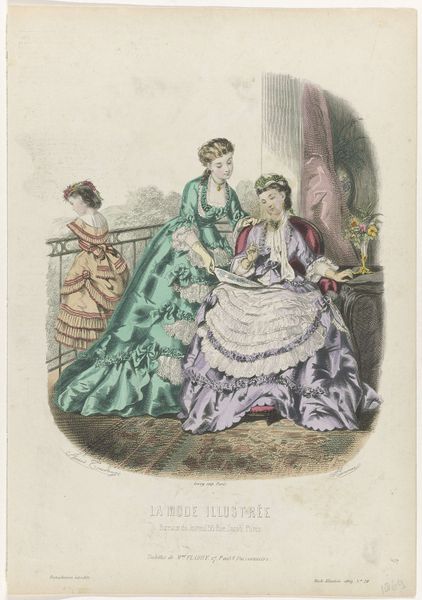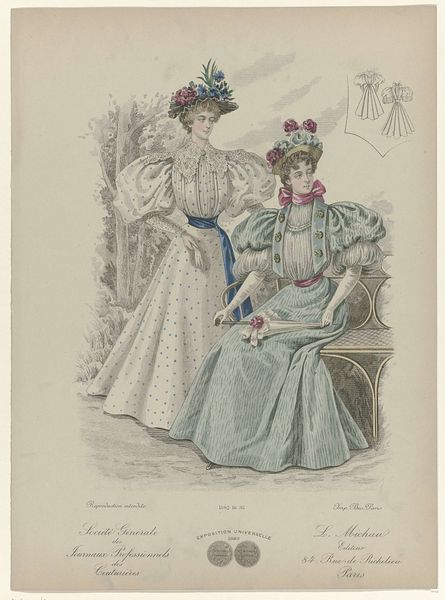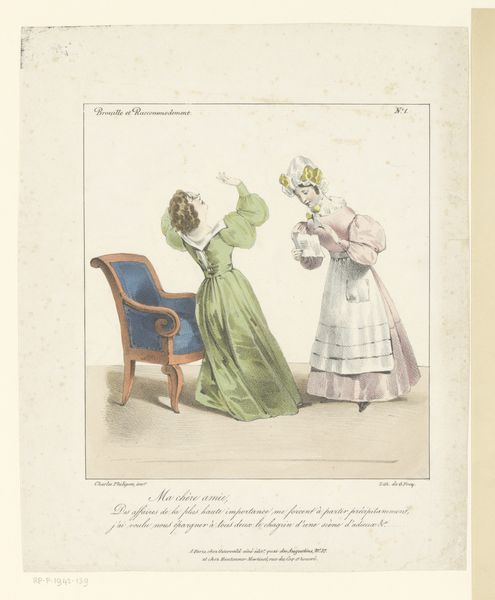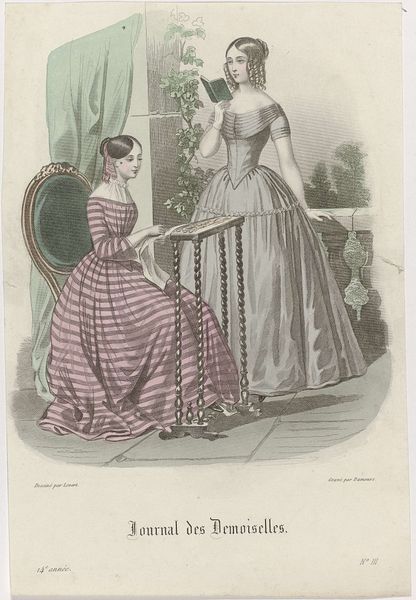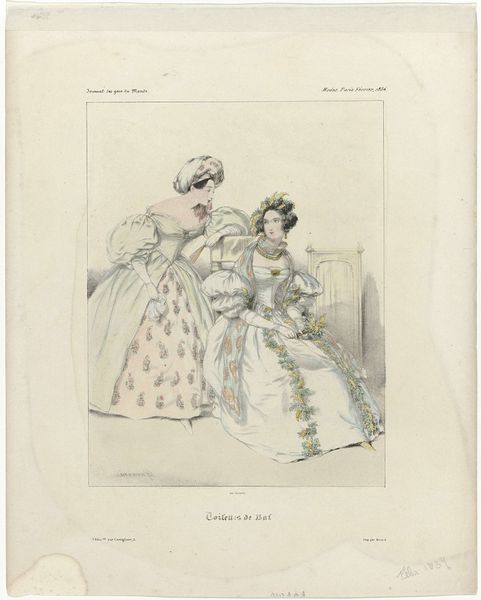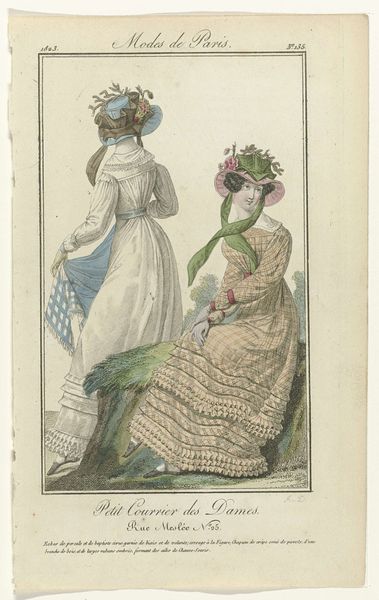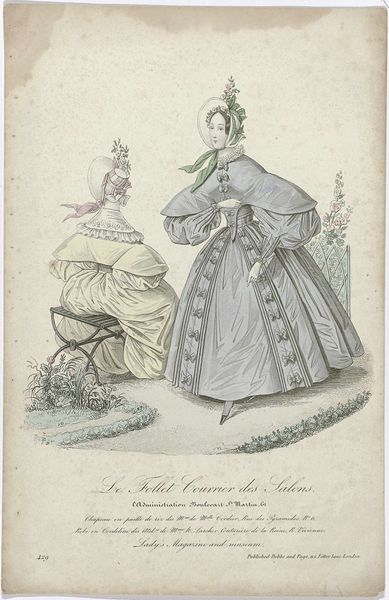
Journal des Dames et des Modes, Costumes Parisiens, 1835, (3266): Bonnet en tull (...) 1835
0:00
0:00
drawing, print, watercolor
#
portrait
#
drawing
# print
#
watercolor
#
romanticism
#
watercolour illustration
#
genre-painting
#
dress
Dimensions: height 253 mm, width 157 mm
Copyright: Rijks Museum: Open Domain
This fashion plate, created by Jean-Denis Nargeot around 1835 for the "Journal des Dames et des Modes," presents an elegant lady and a child, showcasing the height of Parisian fashion. Note the bonnets – delicate constructions of tulle and lace – framing their faces, which hark back to earlier eras of elaborate headwear, symbols of status and refinement. The bonnet, a symbol of modesty and decorum, has roots in religious coverings, evolving over centuries from functional headgear to a complex signifier of femininity. This is not a linear progression, as you will find the bonnet resurfacing in different forms across time, carrying echoes of its past while adapting to new cultural landscapes. Think of the Dutch Masters or even the modest head coverings in contemporary societies. There is also an emotional resonance in the act of veiling and unveiling, of concealing and revealing. It reflects our collective fascination with secrecy and the allure of what lies hidden, engaging viewers on a deep, subconscious level. This cyclical progression is apparent throughout history, demonstrating how the bonnet and its connotations have resurfaced, evolved, and taken on new meanings in different contexts.
Comments
No comments
Be the first to comment and join the conversation on the ultimate creative platform.

